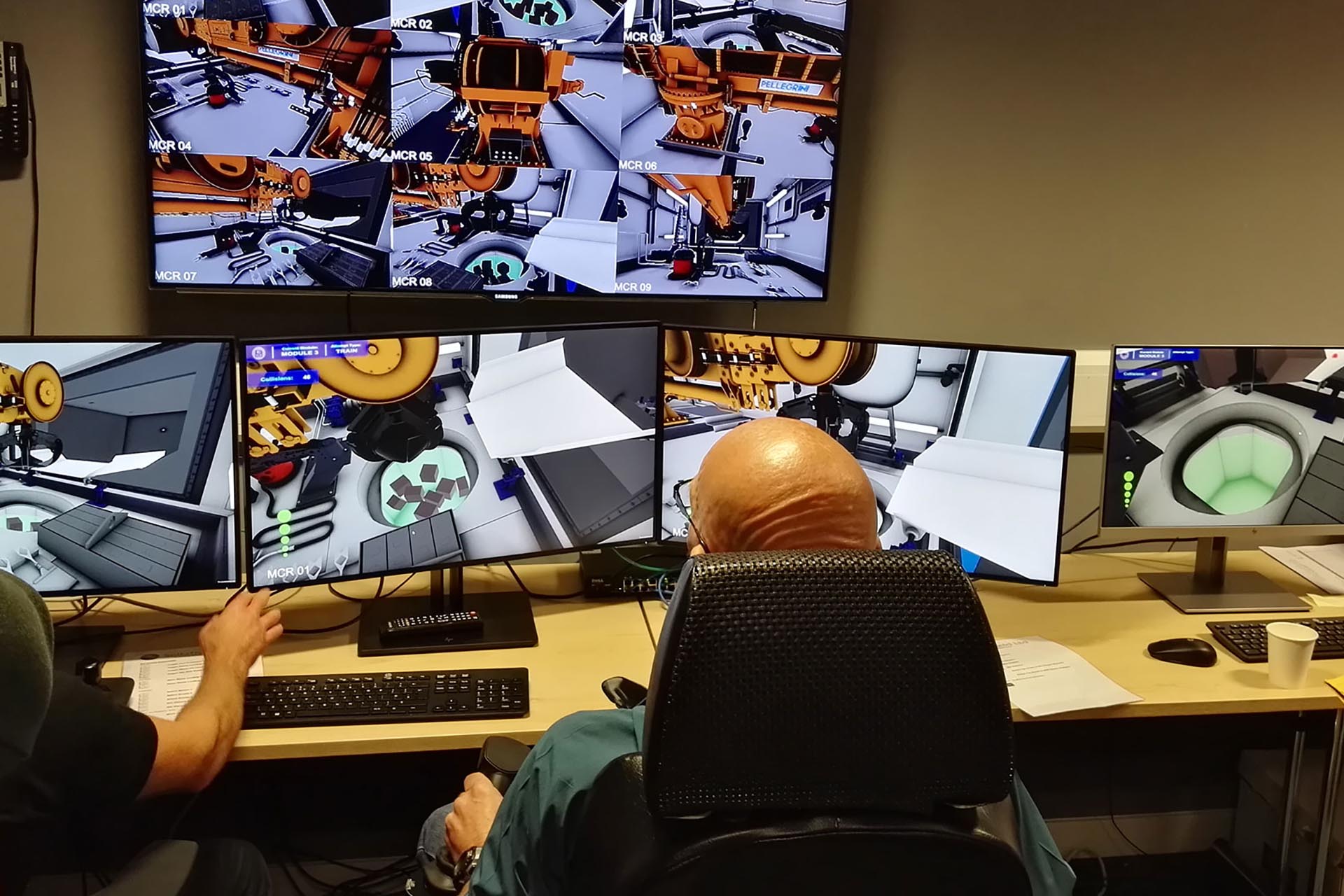The digital platform, a first for the nuclear industry, has already achieved a multi-million-pound return on investment, markedly reducing operator errors and driving up safety in the process.
The challenge
Safety is understandably sacrosanct in the nuclear sector. Each operator involved in decommissioning must be highly-skilled and accurate when using the machinery required to dispose of waste, before they are permitted to work in a live situation with active nuclear material.
The traditional approach to training required the plant to be shut down, resulting in costly downtime. If any of the equipment was damaged, even lightly, during training, it could require lengthier periods of inactivity while repairs were carried out.
Sellafield approached the University of Liverpool’s digital innovation team at the Virtual Engineering Centre with an open brief, to explore and define how digital innovation could be applied to boost safety and productivity, with a focus on automation and simulation. The aim was to understand how they could lower the risk of testing new approaches and delivering training in the safety of controlled, virtual environments.
The solution
VEC’s academics and industry experts mapped the crane arm and CCTV monitoring system used in a fuel silo to create an exact digital twin within a virtual environment. This was complemented by identical physical versions of the chair and control joystick operators were required to use.
The cameras within the virtual world were rendered in the exact positions they would be in real life, while the electronics on the joystick were reverse engineered to ensure the controls reacted at the same rate as in a live situation.
This mixed reality experience provided visual, audio and physical feedback to operators who were able to train and track the number of successful procedures, or collisions, within a virtual training programme.
Benefits
Embedding this cost-effective digital solution has made potentially-hazardous procedures safer and more efficient.
Sellafield was able to make an almost immediate £20m cost saving on future waste retrieval as no physical cranes needed to be set aside for training. Since then, the facility has been able to deliver more training hours per year than prior to using the technology, while the efficiency of operators has also increased, with data showing more nuclear waste is now moved on average each month.
Sellafield has also been able to build adaptability, efficiency and resilience into its future training programme design, in congruence with its commitment to adopting digital innovation for the future.
In addition, adopting the digital environment led to engineers at the plant making physical changes to the actual cranes. Having identified potential safety issues via the platform, they could then validate solutions to them virtually, before commissioning the costly physical upgrades.
The project received a highly commended in the Safety in Innovation category at the Nuclear Decommissioning Authority Safety and Wellbeing Awards.
As a team we are extremely proud of this project and we were delighted that the success was recognised at the NDA awards. The project showcases the in-house expertise we have at the VEC. It was a pleasure to work with the Sellafield team to produce a cutting-edge training solution that has reaped huge cost and productivity savings.
Lynn Dwyer, Head of Commercial for the VEC
Back to: Digital innovation with the University of Liverpool
